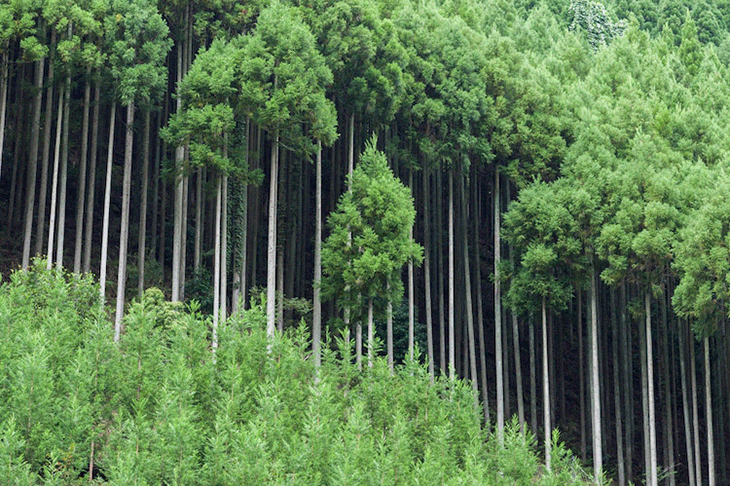Daisugi, the 600 year old Japanese way of growing trees on top of the trees
The elegance of Japan’s traditional style of architecture is admired worldwide. The development of this magnificent style was possible because of the dedication of the Japanese craftsmen.
They have evolved their practices through generations, along with extensive use of woods. This resulted in the shortage of seedlings and land to cultivate the trees by the 14th century. This led to an innovative solution: daisugi. This is the practice of growing additional trees from existing trees.

It’s shocking to learn that this technique dates back as far as the 14th century. This was until Wrath of Gnon, a Twitter user’s post which now has 18.8k likes. Gnon popularized daisugi not only on Twitter but also on Imgur and Reddit.
Sustainable forestry: lumber without cutting down trees. Daisugi is a Japanese forestry technique where specially planted cedar trees are pruned heavily (think of it as giant bonsai) to produce “shoots” that become perfectly uniform, straight and completely knot free lumber. pic.twitter.com/5ULYOmCkLp
— Wrath Of Gnon (@wrathofgnon) April 15, 2020
Originating in the region of Kitayama, locals came up with the idea to overcome the seedling shortage. It was complex and challenging to plant trees in sloped areas, as there was not much land available. Because of the natural landform of the trees, daisugi tailoring allowed arborists to reduce the number of trees planted, accelerate the harvest cycle, and ultimately produce more wood. A Japanese cedar tree, Sugi, utilised this technique more commonly.
Check out the 400-year-old-Bonsai Tree That Survived World War II
Woodcutters have been harvesting mature lumber over the years while encouraging newer shoots. Each cedar is a work of art in its own right. Unfortunately, daisugi cedar has fallen in demand. This is because new buildings and architectural techniques are less depended on this type of lumber in the last century.
The art of tree growth has seen a decline over the years. Today, the daisugi skill and technique of tree cutting can be found mostly only in well-kept gardens. This allows them to show off their elegant and slim appearance.This clever use of bonsai is aesthetic, but the other advantage is that the lumber produced by this process is 140% as flexible as standard cedar and 200% as durable, which makes it idle for making rafts and roofs.
Also read about Bonsai Trees made through Crocheting by a Japanese Artist
